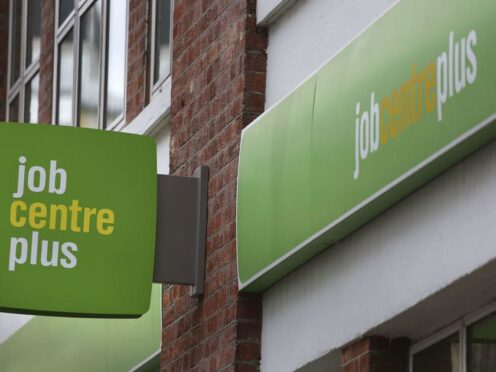
The number of Scots in work has risen in the last three months, new figures showed, but the country’s employment rate is below the national UK level.
Data from the Office for National Statistics (ONS) found there were 2,651,000 people in employment between October to December 2023 in Scotland.
But while this was up by 18,000 compared with the previous three months, the total was 60,000 lower than the same period in 2022.
The employment rate in Scotland was 74.4%, the ONS data showed, compared with 75% for the UK as a whole.
Scotland’s unemployment rate was also higher than for the UK, with 4.5% out of work from October to December, compared with 3.8% nationally.
A total of 126,000 Scots were unemployed in the last three months of 2023, up by 4,000 on the previous quarter and 30,000 higher than October to December 2022.
A Scottish Government spokesperson said the latest figures reflected the “ongoing challenges facing the UK economy”.
They said a “record high number of payrolled employees in Scotland is welcome”, but added: “The wider data reflects the ongoing challenges facing the UK economy, including inflationary pressures and the continuing impacts of Brexit.
“The Scottish Government remains committed to doing everything within currently devolved powers to support more people into work.
“This includes expanding Scotland’s provision of high-quality funded childcare to support more parents and those with caring responsibilities into work.
“The Scottish Government’s employability services are working to tackle inequalities in Scotland’s labour market by helping people progress towards and into sustainable employment.
“The Scottish Government also continues to support and promote flexible working from day one of employment.”
The planned Green Industrial Strategy would help Scotland “realise the enormous economic opportunities of the global transition to net zero and create well-paid green jobs across Scotland”, the spokesperson added.
But they said: “With sectors such as hospitality and agriculture still facing enormous recruitment challenges, the UK Government’s proposed changes to immigration policy will further prevent access to the international labour market that Scotland needs for the economy to prosper.
“With full powers over migration, Scotland could boost its workforce and tackle recruitment challenges.”
Scottish Secretary Alister Jack said: “It’s encouraging to see that Scotland’s labour market remains resilient.
“In January 2024, the number of people on company payrolls in Scotland increased to a new record high of 2.46 million.
“We’ve halved inflation to help achieve long-term, sustainable growth and our £2.5 billion back to work plan is removing barriers to employment meaning fewer people are inactive. It’s changing lives.
“We’re also putting more money in the pockets of hardworking Scottish families by reducing national insurance contributions and, from April, we’ll see the biggest ever rise to the national living wage.
“These measures, together with the £2.9 billion we’re investing into the heart of communities across Scotland, will continue to create new jobs and new opportunities.”

Enjoy the convenience of having The Sunday Post delivered as a digital ePaper straight to your smartphone, tablet or computer.
Subscribe for only £5.49 a month and enjoy all the benefits of the printed paper as a digital replica.
Subscribe